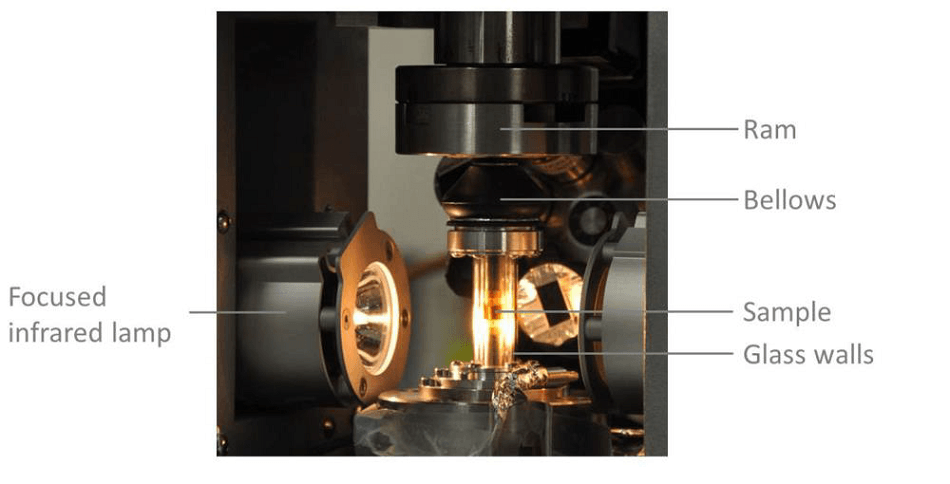 Deben Open-Rig set-up at DLS
Deben Open-Rig set-up at DLS
Scientists from the University of Manchester and Diamond Light Source work with Deben to develop and test a new compression stage to study irradiated graphite at elevated temperatures.
Deben, a leading provider of in-situ testing stages together with innovative accessories and components for electron microscopy, reports on the results of a new paper presented at the 2016 X-Ray Microscopy Conference where a new heating and compression stage has been developed and tested to study irradiated graphite with scientists from the Diamond Light Source and the University of Manchester.
Scientists from the University of Manchester and Diamond Light Source (Diamond) have worked with Deben in the development and commissioning of a new mechanical testing stage. This stage enabled the simultaneous heating and compression of irradiated graphite during synchrotron microtomographic imaging. Presented at the 2016 X-Ray Microscopy Conference held in Oxford, the work has now been published by the Institute of Physics in its IOP Conference Series.1 This is an Open Access paper. The abstract describes the work in overview and is reproduced here with the kind permission of the authors:
Nuclear graphite is used as a neutron moderator in fission power stations. To investigate the microstructural changes that occur during such use, irradiated graphite from a working reactor has been studied for the first time by X-ray microtomography with in-situ heating and compression. This experiment was the first to involve simultaneous heating and mechanical loading of radioactive samples at Diamond Light Source, and represented the first study of radioactive materials at the Diamond-Manchester Imaging Branchline I13-2. Engineering methods and safety protocols were developed to ensure the safe containment of irradiated graphite as it was simultaneously compressed to 450N in a Deben 10kN Open-Frame Rig and heated to 300°C with dual focused infrared lamps. Central to safe containment was a double containment vessel which prevented escape of airborne particulates while enabling compression via a moveable ram and the transmission of infrared light to the sample. Temperature measurements were made in-situ with thermocouples. During heating and compression, samples were simultaneously rotated and imaged with polychromatic X-rays.
The work of the group is illustrated by this montage of four 3D images which show changes in density and pore size of an organic specimen at temperatures from -14.5 °C up to 160 °C.
The experimental set-up is shown here. It is a double containment vessel in the Deben Open-Frame Rig, with focused infrared lamps radiating orthogonally to the direction of the X-ray beam. A nuclear graphite sample can be seen undergoing compression in the vessel.
Speaking about the experiment and its significance, lead author, Dr Andrew Bodey from Diamond says “The resulting microtomograms are being studied via digital volume correlation (DVC) to provide insights into how thermal expansion coefficients and microstructure are affected by irradiation history, load and heat. Such information will be key to improving the accuracy of graphite degradation models which inform safety margins at power stations. Further results, as well as image analysis and DVC methods, will be presented in an upcoming publication.”
Reference 1: Simultaneous heating and compression of irradiated graphite during synchrotron microtomographic imaging. A J Bodey et al: IOP Conf. Series: Journal of Physics: Conf. Series 849 (2017) 012021. doi :10.1088/1742-6596/849/1/012021.
To obtain full details of the Deben applications and product portfolio, please visit www.deben.co.uk. Note: for a high resolution copy of the image, either right click to download or contact Jezz Leckenby at Talking Science.